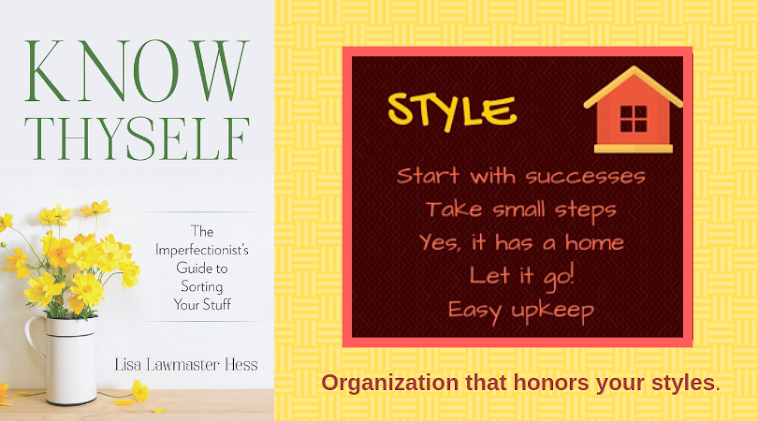True confession #30: There are both weak spots and cracks in my organizational systems.
After more than a decade of reading about organization, formulating my Organizing by STYLE philosophy, and putting that philosophy to work, I've repaired all the gaping holes in my organizational system. I can't say my house is clutter-free, or that my system is perfect, but it has definitely improved.
Still, I am left with weak spots and cracks. A weak spot is (by my definition) something that kind of works but isn't really a long-term solution. Sometimes, the weakness is easily identifiable (wrong container, wrong spot, wrong size) but, until the weak spot becomes a tear or a crack, or until I find a replacement container/spot/accommodation, it'll due.
Cracks are bigger, more time sensitive, and more prone to actually giving way. Like a stack of papers that could topple over at any moment, cracks are systems that could fall apart without warning. The sooner they are addressed, the better.
I hope it's obvious that what I'm talking about here isn't literal weak spots or cracks, but rather flaws and problem spots that need to be addressed. Sometimes, a trail of clutter leads us to them or sometimes they self-destruct under the weight of a responsibility they weren't designed to handle.
Take my mail counter, for example. Regular readers know it was a weak spot (and sometimes a crack) for
years as I tried one inadequate solution after another. Its conspicuous location made it a source of not just clutter but embarrassment as well until, eventually, I found the right tools and created a system that works.
Last weekend, I attacked another weak spot -- my bedroom closet. The floor was littered with boxes that held out-of-season shoes that had no other home. The hanging rods worked but, upon closer inspection, when was the last time I'd worn
anything hanging on the rod that was least accessible?
Hmm.
Long story short, the clothes are in a donation pile, the rod has been removed and a small, cheap shelf unit (thank you, Target) now sits where the clothes were hanging, providing a home for all those formerly homeless shoes. Nearly every pair of shoes I own is now visible or in a clearly labeled box (an
I need to see it victory!
). There's one remaining bin of casual sandals that's in limbo. If they get worn this season, they'll earn a spot on a shelf. If not, they'll go into the donation box, too.
Why did I go so long accepting the fact that I was unable to see the floor of my closet? It was a weak spot. Workable enough to suffice (I could access everything -- kinda), it didn't require my immediate attention. But, once it got my immediate attention, it inspired me to tackle other clutter in my bedroom as well -- mostly because, as with most organizing projects, things got worse before they got better. Now, not only does the closet look better, so do a few other spaces in the room.
Weak spots often hide in plain sight. That pile of clothes that's been on the chair for so long, you no longer see it. The stack of papers that has made itself at home on the dining room table. The almost-right container in the sort of right location that holds things you don't know where to put.
Organizing is a dynamic process that needs to be flexible enough to adjust to the constant flow of "stuff" into and out of our homes. As life changes, our systems have to change, too, but, if we know what our styles are and how they work, those changes are more of a pivot than an all-out makeover. If we tackle the weak spots while they're still just that, we can save ourselves the headache of repairing a crack that has given way.
And, perhaps best of all, we can create beautiful, coveted clear space in the process.














